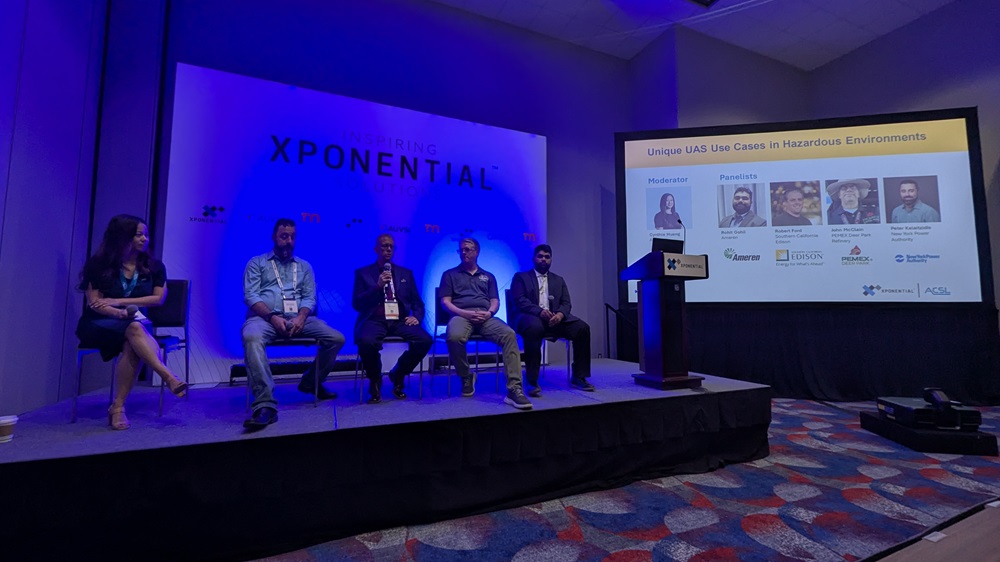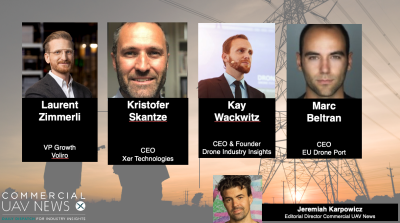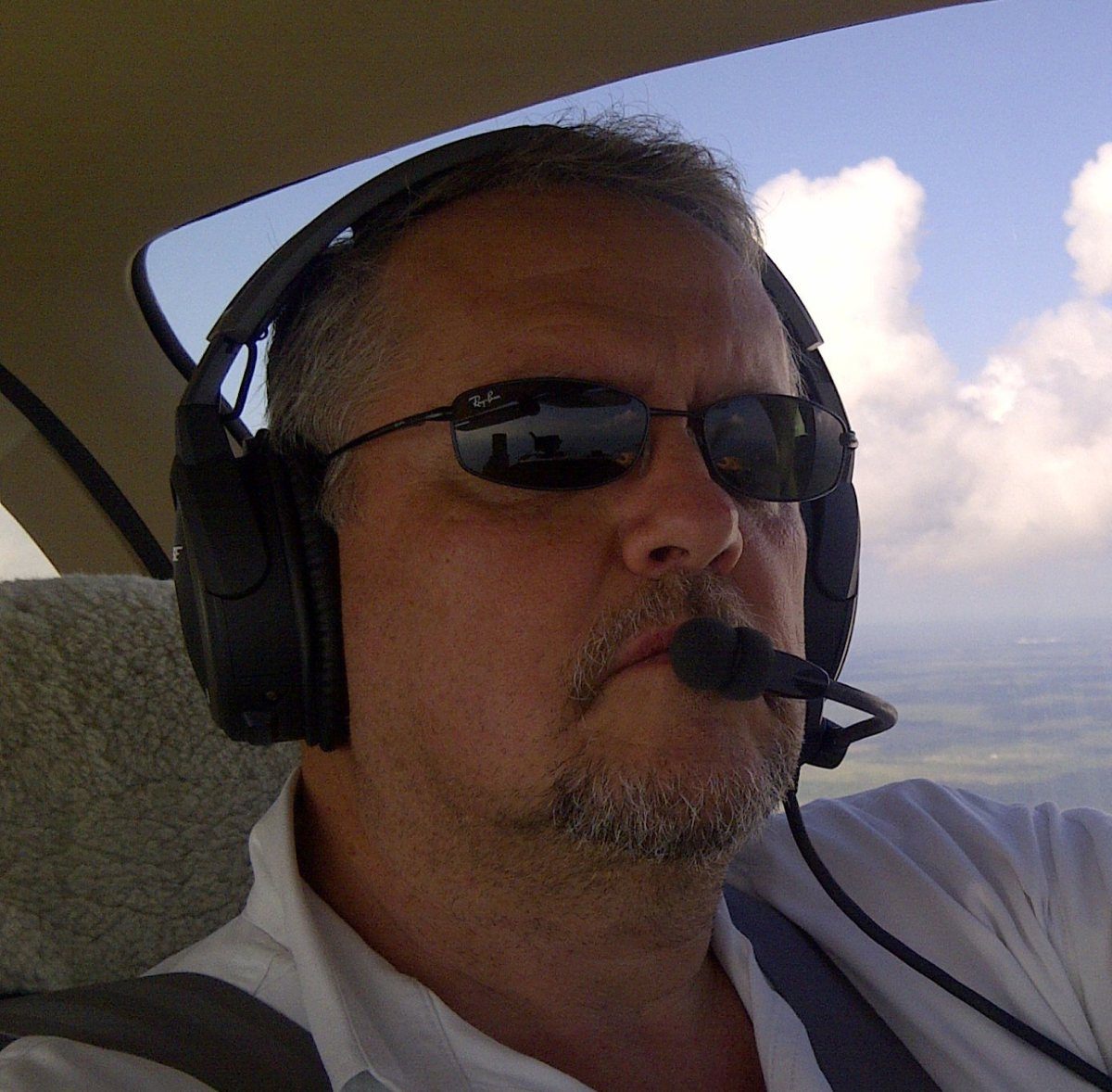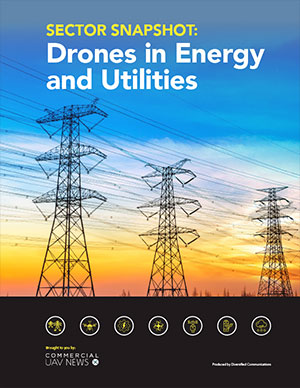A range of drone program stakeholders from electric utility and oil & gas organizations took the stage at XPONENTIAL 2025 to describe how they’re using the technology. Whether it’s to identify issues before they turn into problems, keep people safe or create assets that their entire organization can utilize, the panel showcased how and where the technology is making a difference for organization across the United States.
Cynthia Huang from ACSL Inc. moderated the panel, and she began by asking about the common challenges. Access to and mobility within the terrain is a major issue for many teams, with many having to deal with wildlife like snakes and bears. Accessibility to assets isn’t just about a specific location though, and challenges within can change on a frequent basis.
“Vegetation management is a constant battle,” said Robert Ford from Southern California Edison. “Whatever we cut back will be back next year.”
Others called out the challenges that come with places that most people don’t see, whether it’s turbine rooms or somewhere underground. Additionally, several panelists mentioned that customer anger when needing to access a given area or location is a problem they’re running into more and more. It’s a problem that is in some ways getting worse and isn’t specific to a region or service.
The stakes associated with returning service is top of mind for most teams, as it can take days or even weeks to restore service in some circumstances. While drones are being utilized to assess situations after an incident, they’re also being used to proactively identify what it means to prevent such incidents before they happen.
“Using the drone for the inspection of pipe valves allows us to identify the problems early,” said John McClain from PEMEX Deer Park Refinery. “If any of those go down, everything can go down, so the stakes associated with getting in front of that work couldn’t be higher.”
Those details compelled a discussion about exactly how all of the participants were using drones in a similarly proactive manner, or whether or not they’re being deployed as a means of assessment and data capture. Each panelist talked through how their approach wasn’t about using the technology in a limited manner but to safely address a need or issue. Thinking about the technology this way has also opened up cross-pollination across different teams.
That cross-pollination has happened in a big way at places like Southern California Edison, where the technology has become an operational pillar for various teams and tasks. Their drone adoption strategy combines centralized governance with decentralized operations, allowing teams to use drones as a readily available tool for immediate incident response as well as scheduled maintenance. This approach has set a precedent for others, all of which is based on the inherent accessibility of the technology.
“The benefit of these tools is that anyone can use them,” said Peter Kalaitzidis from New York Power Authority. “We had someone that was ready to retire but didn’t because of how they were able to use this technology, which shows how we see the drone as an extension of the team. All of that comes from a centralized structure but a decentralized operation where the focus is on how we can use the machine while keeping the person out of harm’s way.”
Ameren has teams that do nothing but fly drones to enable operations to take place much faster. This kind of support sees the technology utilized on the preventative side but also during construction phases of a project to identify progress and verify changes. However, the info they’re capturing isn’t limited to that project.
“The drone had been put into just about every phase of our projects,” said Rohit Gohil from Ameren. “We also make sure the data isn’t used by just one team. Having that available in one centralized location so that everyone can use it is key.”
That accessibility can be one of the key components of an adoption process, which can start from a very basic place. Kalaitzidis told a story about hearing from a lineman who had to climb a 174-foot tower and what it meant to identify a bolt. This three-hour process was dangerous for a few different reasons, compelling him to ask a very simple question.
“Can we do it with the drone?” he asked the team. “Those questions and answers define everything about how we use the technology.”
It’s an approach that has seen the FAA grant waivers to NYPA that have given them license to conduct fully remote BVLOS operations without prior approval. As Kalaitzidis has previously mentioned, their program centers around minimizing the exposure of personnel to hazardous energized environments. This approach not only protects the safety of personnel but can help reduce the risk of accidents and potential injuries.
Wrapping the panel up, Huang mentioned that years ago, it was estimated by utility participants on similar panels that only 15% of the industry was utilizing drones. She asked whether or not that number had increased, and while there was consensus that it had, the volume of operations that certain organizations were now conducting means whatever the number is today, it might no reveal how truly widespread adoption has become.
Other topics included an assessment of the ROI associated with the technology, as well as a quick contest to determine who had the most unique use case, compelling stories that touched on how the technology is being used for everything from bat-tracking to valve analysis to the inspection of unexpected places.
















Comments